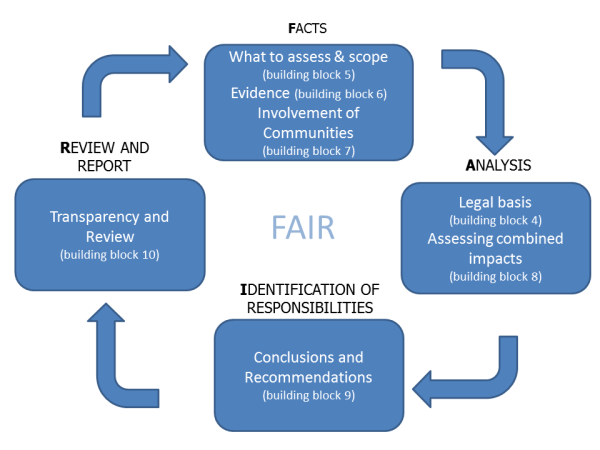What is the process for assessing human rights impact?
In a 2010 report commissioned by the SHRC it was found through an analysis of existing practice in Human Rights Impact Assessment (HRIA) that there is considerable variation in the complexity and quality of both HRIA methodologies, and in the resulting assessments both in the UK and internationally.
The report nevertheless found that there are common methodological steps taken in most HRIAs (a screening stage, a scoping stage, evidence gathering, consultation analysis, conclusions and recommendations, publication and monitoring and review).
These process steps mirror those taken in traditional equality impact assessment processes and the legal duties around assessing equality impact (for guidance see the EHRC guide), meaning it makes sense both conceptually and practically to consider equality and human rights as part of the same policy making process.
Human Rights Impact Assessment: Review of Practice and Guidance for Future Assessments by James Harrison and Mary-Ann Stephenson, 1 June 2010.
FAIR is a means of putting a human rights based approach into practice. It is a practical way of applying the PANEL framework as outlined above and is applied in the case study examples here.
The FAIR principles are broadly as follows:
Facts: Assessing impact requires a thorough understanding of the facts engaged by the proposed policy or practice and the potential effects on people. This will require an appropriate level of resources and consideration of relevant evidence. Most importantly it will require the meaningful participation of affected rights- holders.
Analysis: Assessing impact requires undertaking an analysis of the potential positive and negative impacts of the proposed policy or practice on equality and on the human rights at stake.
Identification of responsibilities: Where the policy or proposal engages equality and human rights issues, assessing impact requires deciding whether changes should be made and identifying responsibility for these changes.
Review and reporting: Assessing impact requires consideration of how the implementation of the function or policy will be monitored and how the results of an impact assessment will be reported.
This diagram demonstrates the process of EQHRIA, in relation to the Good Practice Building Blocks which follow.

The Commissions believe that impact assessments should be a way of applying a human rights based approach in practice. They should see human rights both as a means, or way of doing things, driven by human rights and equality standards and principles, as well as an end to be achieved- the FAIR approach seeks to achieve this in practice.


